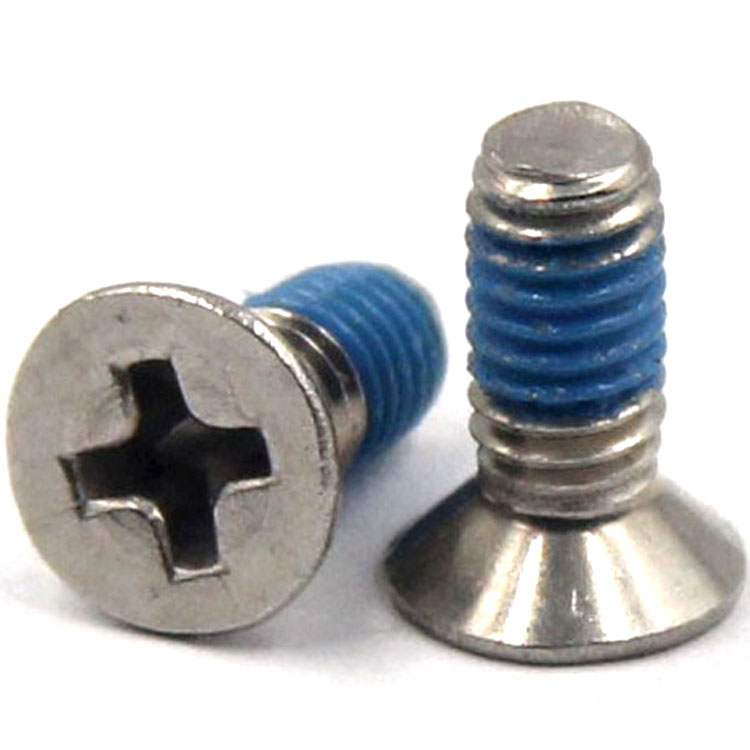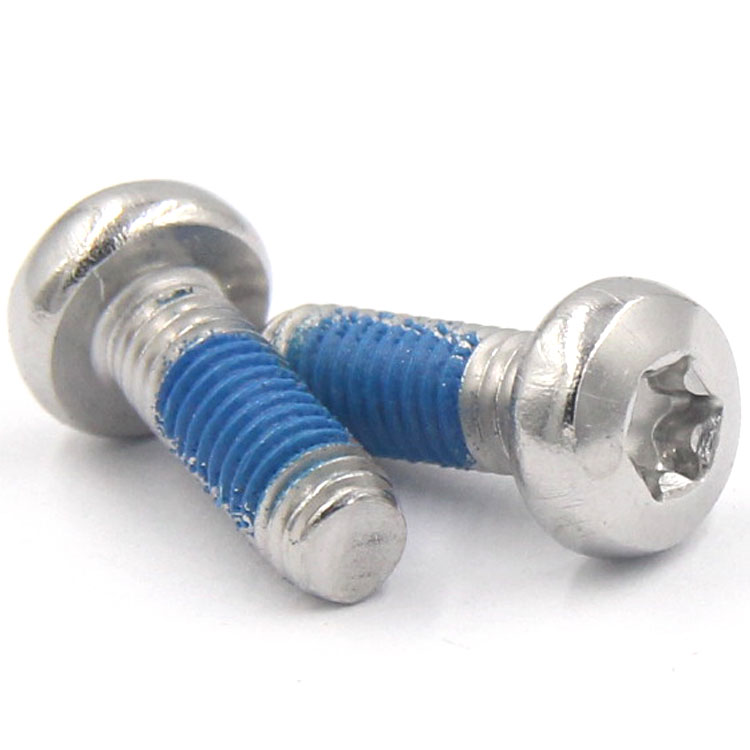- small screw,micro fastener,mini screw
- 0756-8586520
Black zinc Hex socket head cap screws fully threaded 12.9
- Product description:With four core advantages—"12.9-grade high-strength material", "black zinc weather-resistant protection", "cup head structural adaptability" and "professional anti-loosening design"—the 12.9-grade bla
"12.9-grade" is the key identifier that distinguishes this screw from ordinary screws, representing its compliance with the industry's top standards for high-strength fasteners. According to the ISO 898-1 standard for mechanical properties of fasteners, 12.9-grade screws must have a nominal tensile strength of ≥1200MPa, a yield strength of ≥1080MPa, and a hardness range of Rockwell HRC 38-44. This means that a 12.9-grade screw of M10 specification can withstand a tensile force of over 80kN—equivalent to lifting an 8-ton object—far exceeding the performance of 8.8-grade screws (with a tensile strength of ≥800MPa).
The base material is mostly SCM435 alloy structural steel, which undergoes a precision heat treatment process of "quenching + high-temperature tempering" to form a uniform tempered martensite structure inside the steel. This not only ensures ultra-high strength but also provides a certain degree of toughness, preventing brittle fracture under high loads. It is perfectly suitable for key connection parts that need to transmit huge torque, such as automotive crankshafts and industrial gearboxes.
"Cup Head" Structural Design
The "Cup Head" (also known as cylindrical head) design endows the screw with excellent assembly adaptability and load-bearing stability. The cylindrical head has a moderate height and a flat top, with a hexagon socket (or Torx socket for some models) machined on the inner side. This structure offers significant advantages:
- On one hand, the hexagon socket has a larger contact area with tools, improving torque transmission efficiency by over 40% compared to traditional Phillips slots. It avoids "cam-out" (slippage between tool and screw head) during tightening, ensuring the screw accurately reaches the preset preload even in high-strength fastening scenarios.
- On the other hand, the cylindrical shape of the cup head is compatible with connected components with counterbores; the head can be fully embedded in the counterbore, avoiding interference caused by protruding from the surface. This makes it particularly suitable for connecting precision molds, automation equipment housings, and internal components—ensuring a flat appearance while preventing damage to the screw head from external impacts.
Additionally, the cup head has uniform wall thickness, which allows for more reasonable stress distribution under load, effectively dispersing the load and reducing the risk of screw fracture caused by local stress concentration.
Black Zinc Surface Treatment
The adoption of "black zinc" surface treatment is an important support for the screw's weather resistance and practicality. Black zinc treatment is not a simple blackening process; instead, it forms a dense black protective film (8-15μm thick) on the screw surface through zinc-nickel alloy plating or black passivation.
Compared with ordinary white zinc plating, black zinc plating significantly improves corrosion resistance: in neutral salt spray tests, it provides corrosion protection for 96-120 hours—2-3 times longer than white zinc. It can effectively resist oil, dust, and mild corrosive media in industrial environments, avoiding difficult disassembly or reduced strength caused by screw rust.
Meanwhile, the black appearance of the screw offers both concealment and aesthetics. In scenarios requiring coordinated appearance (such as automotive chassis and internal mechanical equipment), it can better blend with the color of components, reducing visual 突兀感 (visual awkwardness). Moreover, the stable friction coefficient of the black zinc coating ensures accurate torque transmission during tightening, providing auxiliary support for anti-loosening effects.
Anti-Loosening Design
Anti-loosening design is the core competitiveness of 12.9-grade black zinc cup head screws in vibration scenarios, with three mainstream technical approaches: "thread adhesive coating", "knurled anti-loosening", and "double-thread anti-loosening".
- Thread Adhesive Coating: A high-strength anaerobic anti-loosening adhesive is evenly applied to the screw thread surface. The adhesive remains liquid when unassembled, without affecting storage; after assembly, it cures rapidly in an anaerobic environment to form a bonding layer with a strength of over 30MPa. This layer firmly locks the screw to the internal threaded hole, resisting a reverse torque of 20-30N·m. In long-term vibration equipment (such as fans and water pumps), the loosening rate is only 1/15 that of ordinary screws.
- Knurled Anti-Loosening: Tiny diamond-shaped knurls are pressed on the side of the thread teeth. When screwed together, the knurls embed into the surface of the internal thread, forming physical engagement resistance. This purely mechanical anti-loosening method does not rely on adhesives, making it suitable for high-temperature environments (with short-term heat resistance up to 250℃) and allowing 3-5 cycles of disassembly for easy later maintenance.
- Double-Thread Anti-Loosening: A section of auxiliary thread with the opposite direction to the main thread is machined at the end of the screw. During assembly, the auxiliary thread forms a reverse lock with the internal threaded hole, further enhancing anti-loosening effects. It is mostly used in ultra-high-pressure load scenarios such as automotive drive shafts and heavy machine tool spindles.
Application Scenarios
The high strength and anti-loosening properties of 12.9-grade black zinc anti-loose cup head screws make them "essential fasteners" in multiple fields:
- Automotive Industry: Used for fixing engine connecting rods and gearbox gear sets. The 12.9-grade strength withstands the huge impact force during engine operation, the black zinc coating resists oil corrosion, and the anti-loosening design prevents screw loosening caused by vibration.
- Industrial Equipment: For connecting ball screws of CNC machine tools and rollers of printing machines. The screws need to transmit high torque stably for a long time; the cup head structure is compatible with precision counterbores, and the 12.9-grade material ensures reliable load transmission.
- New Energy Field: For fixing wind turbine nacelle brackets and photovoltaic inverter power modules. The complex outdoor environment requires screws to have both high strength and weather resistance, and the combination of black zinc coating and anti-loosening design meets long-term use needs.
- Mold Manufacturing: For connecting plastic mold templates and fixing the cutting edges of stamping molds. The hexagon socket of the cup head facilitates precise torque control, and the 12.9-grade strength prevents screw deformation caused by stress during mold opening and closing.
Usage Precautions
To fully utilize the performance of this screw, three key points should be noted:
- Tool Compatibility: Must use a hexagon wrench of matching specification (e.g., a 6mm hexagon wrench for M8 screws) to avoid damaging the socket due to mismatched tool size, which would affect torque transmission.
- Precise Torque Control: Set the torque according to the base material and load requirements (e.g., the recommended torque for M10 12.9-grade screws on steel substrates is 35-45N·m). Over-tightening may cause thread stripping or deformation of the connected component, while insufficient torque fails to exert anti-loosening effects. It is recommended to use a digital torque wrench for operation.
- Environment Adaptation: Although black zinc coating has strong corrosion resistance, it is not suitable for strong acid, strong alkali, or long-term immersion environments. In such scenarios, it is advisable to use high-strength screws made of 316 stainless steel with additional anti-corrosion coatings to ensure long-term reliability.
As a "benchmark product" in the high-strength fastening field, the 12.9-grade black zinc anti-loose cup head screw deeply integrates material strength, structural adaptability, weather resistance protection, and anti-loosening technology. It not only solves the pain points of traditional high-strength screws—"weak anti-loosening and easy corrosion"—but also meets the modern industrial demand for "high reliability and long service life" in fasteners. With the development of industrial equipment toward larger scale and higher precision, the demand for high-strength fasteners will continue to grow. This screw is expected to play a role in more key fields, becoming an "invisible cornerstone" for ensuring the safe operation of equipment.



